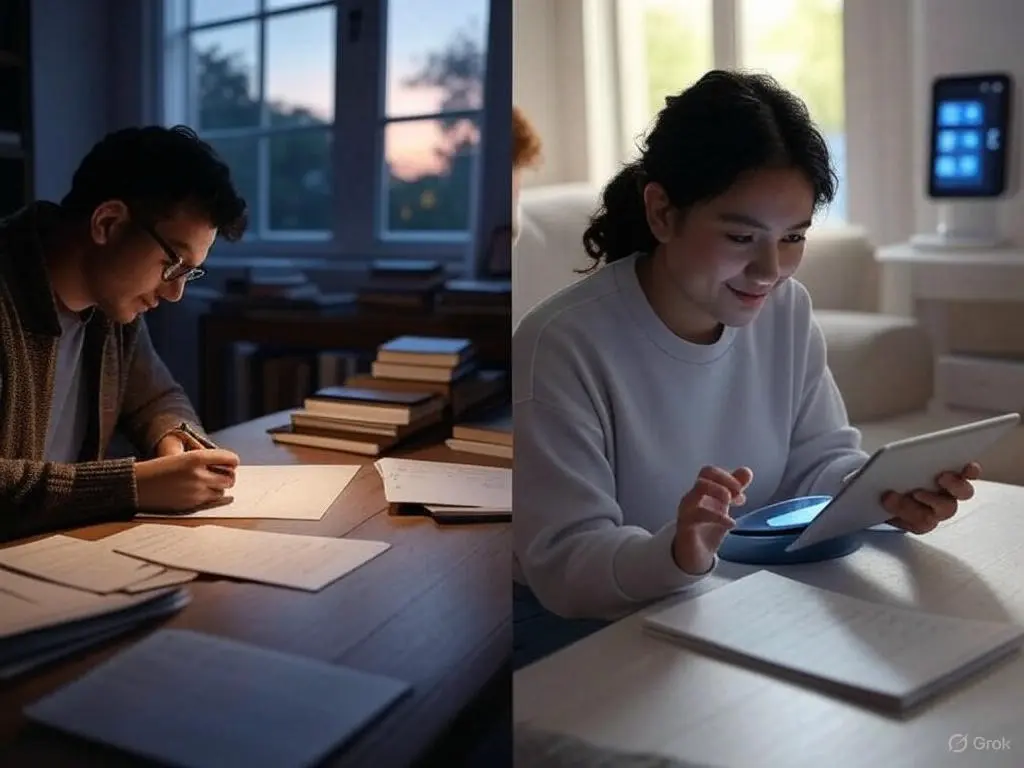Explore the difference between life before AI and life after AI. Learn how AI changed daily routines, work, and entertainment in this easy guide.
Difference Between Life Before AI and Life After AI: A Complete Guide
Artificial Intelligence (AI) has changed the world in ways we never imagined. From how we work to how we relax, AI is everywhere. But what was life like before AI? And how is it different now? This guide explains the difference between life before AI and life after AI in simple terms. By the end, you’ll understand how AI has reshaped our lives and what it means for the future.
What Was Life Like Before AI?
Before AI, life was slower and more manual. People relied on their skills, tools, and time to get things done. Let’s look at some key areas.
Daily Routines
In the past, tasks like scheduling appointments or finding information took effort. People used paper calendars, phone books, or libraries. Communication was limited to letters, landline phones, or early email. Everything required more steps and patience.
Work and Industry
Work was labor-intensive. Factories used human workers for repetitive tasks. Offices relied on typewriters, fax machines, and manual calculations. Data analysis was slow, and mistakes were common. Industries like healthcare and finance depended on human expertise alone.
Entertainment and Leisure
Entertainment was less personal. People watched TV shows at set times or listened to the radio. Choosing music meant buying CDs or tapes. There were no algorithms to suggest movies or playlists based on your tastes.
Challenges
Life before AI had many inefficiencies. Tasks took longer, and information wasn’t easy to find. People spent hours on things we now do in seconds. Limited technology meant fewer options and less convenience.
How Has Life Changed After AI?
Today, AI is part of almost everything we do. It makes life faster, easier, and more connected. Here’s how the difference between life before AI and life after AI shows up today.
Daily Routines
AI powers tools like virtual assistants (e.g., Siri, Alexa) that schedule tasks, set reminders, or answer questions instantly. Smart home devices control lights, thermostats, and security systems. Apps like Google Maps use AI to find the fastest routes, saving time every day.
Work and Industry
AI has transformed workplaces. Machines now handle repetitive tasks, freeing workers for creative jobs. In healthcare, AI helps doctors diagnose diseases faster (MIT News). In finance, AI detects fraud in seconds. Businesses use AI to analyze data and make smarter decisions, boosting productivity.
Entertainment and Leisure
Streaming platforms like Netflix and Spotify use AI to recommend shows and songs you’ll love. AI even creates art, music, and video games. Virtual reality and augmented reality, powered by AI, offer immersive experiences that didn’t exist before.
Benefits
AI saves time and opens new possibilities. It makes information accessible to everyone, from students to professionals. Personalized services, like tailored ads or learning plans, improve our experiences. The difference between life before AI and life after AI is clear: life is now more efficient and exciting.
Key Differences Between Life Before AI and Life After AI
The shift from life before AI to life after AI is huge. Here are the main differences:
Efficiency and Speed
Before AI, tasks like research or calculations took hours or days. Now, AI tools do them in seconds. For example, search engines use AI to find answers instantly, unlike flipping through books in the past.
Accessibility
AI makes information and services available to all. Anyone with a smartphone can access AI tools, from language translators to financial advisors. This wasn’t possible before AI.
Personalization
Life after AI is tailored to you. Shopping sites suggest products based on your habits. Learning apps adjust lessons to your pace. Before AI, experiences were one-size-fits-all.
Ethical Concerns
While AI brings benefits, it also raises issues. Privacy is a big concern, as AI collects data about us (Pew Research). Job displacement is another worry, as machines replace some roles. AI bias can also lead to unfair outcomes, which wasn’t an issue before AI.
FAQs About the Difference Between Life Before AI and Life After AI
1. What is the main difference between life before AI and life after AI?
The main difference is efficiency. Before AI, tasks were manual and slow. After AI, automation and smart tools make life faster and easier.
2. How has AI improved daily life?
AI saves time with tools like virtual assistants, smart devices, and personalized apps. It makes tasks like scheduling or shopping simpler.
3. What are the downsides of AI in modern life?
Downsides include privacy risks, job losses, and AI bias. These challenges require careful management.
4. Can AI completely replace human jobs?
AI can replace some jobs, like repetitive tasks, but it also creates new roles. Human creativity and emotions are still unique (Forbes).
5. How did people manage tasks before AI?
People used manual tools like paper, calculators, or typewriters. Tasks took more time and effort.
Conclusion
The difference between life before AI and life after AI is transformative. Before AI, life was slower, less connected, and more manual. Today, AI powers our routines, work, and entertainment, making them faster and more personalized. While AI brings challenges like privacy and job concerns, its benefits are undeniable. As AI grows, we must embrace its advantages and address its risks.
What’s your experience with AI? Share your thoughts in the comments or check out our other posts on technology trends!

